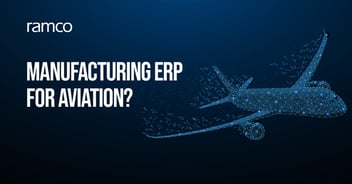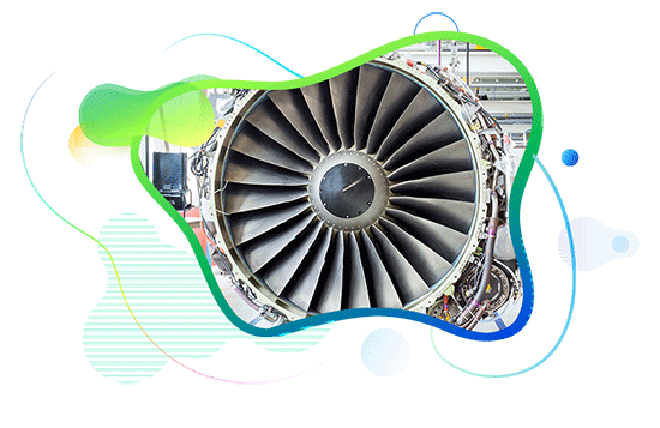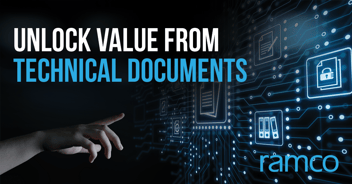
Aviation being an asset intensive industry, depreciation of assets becomes an arduous task for the finance department in an organization. Organizations look for more appropriate methods other than Straight Line or Diminishing Balance to depreciate assets like Rotables which can regain life after overhaul.
The most interesting method from my point of view is managing depreciation cycle of the Rotable assets based on their usage until the next major maintenance activity. The clear advantage of this method of depreciation based on actual usage gives a fair value of depreciation. The AICPA Airline Audit and Accounting Guide suggest this method of depreciation as - Deferral method and Built-in overhaul method. However, implementation of this method without errors is a huge challenge considering the amount of data it relies on from systems external to the finance system.
With an integrated Ramco’s Aviation software, we have customers running depreciation of their Rotable assets automatically at the end of each period without any human intervention. Ramco Aviation ERP framework allows setting up various advance policies within the Usage Depreciation method based on the unique differences of assets even within the Rotables class. Different methods of Usage depreciation available in Ramco Aviation ERP are listed below -
| Usage - Life to Phase-out | Depreciation of Assets based on their Usage [flight cycles, flight hours, etc.,] until their Useful life. At the end of useful life, Book Value is written-off & asset retired. [Life Limited Parts] |
| Usage - Life to Overhaul | Depreciation of Assets based on their Usage [flight cycles, flight hours, etc.,] until the next Overhaul activity.At the time of Overhaul, Asset cost will be written-off and the Overhaul cost capitalized for further depreciation. |
| Usage - Time to Next CME Event | Depreciation Assets based on their Usage [flight cycles, flight hours, etc.,] until the next Major Maintenance activity other than Overhaul. |
| Usage Remaining Over Interval in FA | This method gives flexibility to Fixed assets Managers to maintain the Maintenance Interval limit on their own based on experience rather receiving information from maintenance mangers. |
For a seamless connect with the Maintenance functions, the Maintenance Asset Tracker function of Ramco Aviation ERP efficiently links up the Rotable Components and Asset Ids for tracking usage of assets from Maintenance program. With Capitalization linked to the asset overhauls and the component feeding in the hours for usage, the role of Fixed Assets Accountant is limited to review the exception and confirming the go ahead for the depreciation accounting. Not just that, events such as Exchanges, Scrappage, Phase-outs etc are instantly recognized in the Fixed asset system.
Having implemented this function for many of our customer organizations, ‘am increasingly convinced that requirements such as the ‘Built in Overhaul method of depreciation’ can in reality and spirit be accomplished only with the help of a solution that works on a truly online and integrated principle.
With the Usage based Depreciation function of Ramco Aviation Solution, we do have many of our customers not looking at this as an arduous or an impossible task anymore.
Simplifying Asset Depreciation with MRO Aviation Software
The complexities of asset depreciation in the aviation industry often stem from its reliance on traditional methods that fail to account for the dynamic lifecycle of Rotable assets. This is where MRO aviation software like Ramco Aviation ERP steps in, offering advanced features tailored to the unique requirements of the sector.
Ramco’s integrated MRO software not only simplifies depreciation cycles but also ensures compliance with industry standards such as the AICPA Airline Audit and Accounting Guide. By leveraging automation and real-time data from maintenance programs, the software enables accurate depreciation based on actual usage metrics like flight hours and cycles.
For instance, its Usage - Life to Overhaul method aligns depreciation with maintenance intervals, while the Usage - Time to Next CME Event focuses on major maintenance activities. These methods, supported by seamless integration between maintenance and finance systems, provide a comprehensive solution for managing Rotable assets.
With organizations increasingly adopting Ramco’s MRO aviation software, asset depreciation has transformed into a more precise and automated process, alleviating the burdens of manual intervention and data discrepancies.
Feel free to connect with us at contact@ramco.com for any Aviation related queries.
Frequently Asked Questions (FAQs)
Enterprise asset management (EAM) involves the management of mission critical assets of an organization throughout each asset's lifecycle. EAM is used to plan, optimize, execute, and track the needed maintenance activities with the associated priorities, skills, materials, tools, and information. The aim is to optimize the quality and utilization of assets throughout their lifecycle, increase productive uptime and reduce operational costs.
Enterprise asset management (EAM) involves the management of the maintenance of physical assets of an organization throughout each asset's lifecycle. EAM is used to plan, optimize, execute, and track the needed maintenance activities with the associated priorities, skills, materials, tools, and information.
The software helps in effective maintenance of assets through preventive, predictive, shutdown and breakdown maintenance strategies. The system also helps enterprises mitigate equipment risks by enhanced safety standards. The streamlined operations and improved asset performance helps organizations increase their investment effectiveness.
EAM is important because it helps organizations track, assess, manage and optimize asset quality and reliability. Asset intensive Organizations have hundreds, thousands, even millions of assets which needs to be maintained to maximize / optimize life of these assets to increase the return on investment.
The key features of effective EAM are:
- Work management.
- Maintenance Strategies (Preventive/ Predictive / Breakdown / Shutdown).
- Planning and scheduling.
- Supply chain management.
- Health and safety.
- Mobility.
- Analytics.
- Improved Asset Health at reduced cost through data driven maintenance Programs
- Complete visibilityon entire maintenance data across Equipment, across Models, across Branches to aid in analysis & decision making such as to Repair or Replace the Equipment
- Insightful analysis of Inspection Data to improve customer satisfaction
- Effective maintenance management enhanced by predictive maintenance and inbuilt analytics
- Increased reliability and safety, keeps complete track of all the inspections & calibration schedules
- Mobile Application enables users to execute work while “in the field” leading to minimized non-productive time and increased productivity and reduces duplication of work and human errors in recording information.
- Quick turnaround time through Actionable Notification & Alerts for every process in real time and accessible anytime and anywhere.
- Improved Regulatory Part of asset management involves the implementation of better O&M practices, which can significantly improve compliance.
Asset Intensive companies under the following Industries :
- Ports
- Cement and Mining
- Utilities
- Fleet Maintenance
- Equipment Rental
- Other Manufacturing
- Real Estate & Infrastructure
- Power Generation
Contact us for a meeting and schedule a demo
This differs on case to case basis, based on the type of installation and unique industry specific requirements. Contact us for a meeting and schedule a demo.
This differs on case to case basis, based on the type of installation and unique industry specific requirements. Contact us for a meeting and schedule a demo.
Stay Connected, follow us on LinkedIn / Twitter to know more about EAM Software latest trends.


